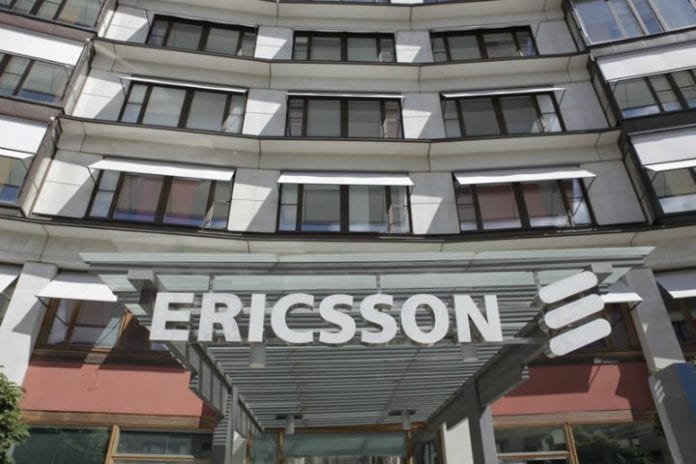Ericsson will buy Vonage in a $6.2 billion deal
Network equipment and services provider Ericsson will acquire enterprise cloud services company Vonage in a $6.2 billion deal, which it touts as fundamental to creating a cloud-focused platform centered on “open innovation” and the ability for its customers to monetize 5G in the enterprise.
Ericsson said that the buy “underlines [its] strategy to expand its presence in wireless enterprise and broaden its global offerings.” The acquisition is Ericsson’s largest-ever, and the deal is expected to close in the first half of 2022.
The network equipment company emphasized in a release that Vonage’s “robust performance and growth prospects” are built on its Vonage Communications Platform (VCP). Ericsson noted that VCP provides about 80% of Vonage’s total revenues and serves more than one million registered developers around the world, who develop apps for about 120,000 business customers.
“Imagine putting the power of the 5G network—a massive, global innovation platform—at the fingertips of developers, and then backing it with Vonage advanced communications services in a world of 8 billion connected devices,” said Ericsson President and CEO Börje Ekholm in a video posted to his Twitter account. “Today, with this announcement, we are making that ambition possible.”
He went on to add: “The digitalization of business and demand for connected applications, especially video, is growing exponentially. This is going to continue for the foreseeable future, meaning a huge opportunity for Ericsson, for our customers, for businesses and ultimately, for end users.”
Ericsson CFO Carl Mellander told Reuters that Vonage is “complementary to what we have built in enterprise so far,” while also referencing Ericsson’s $1.2 billion acquisition of Cradlepoint last year.
Ekholm told the Financial Times that amid major 5G network investments by telecom operations, “We want to improve the monetisation capability. Network operators aren’t going to build out 5G unless they can monetise it,” he said.
Ericsson said in a release that the transaction builds upon its stated intent to expand globally in wireless enterprise and “[offer] existing customers an increased share” of the enterprise market, which is seen as key to 5G success. But it also puts the company in the potentially touchy position of being a service provider itself, as Vonage provides services including voice over IP and unified communications.
Dean Bubley, founder of Disruptive Analysis, said in a LinkedIn post about the transaction: “I think this acquisition has very little to do with #5G – It’s more about increasing Ericsson exposure to enterprises, without overly scaring its telco customers (with which Vonage competes in many areas).”
In positioning the transaction, Ericsson touted Vonage’s Communication Platform as a Service (CPaaS) position as a complementary and high-growth area that will dovetail with—and ultimately, help to fuel—enterprise 5G applications and ecosystems. “With increasing investments in 4G and 5G – and a flourishing ecosystem of new applications and use cases leveraging the power of modern networks – demand from enterprises for programmable networks has been accelerating,” Ericsson said in explaining the acquisition. “In addition, Ericsson’s global leadership in 5G technology is expected to provide access to the developing space for open network APIs, which is expected to reach at least USD $8 billion by the end of the decade with a strong growth profile. …The combination of Vonage’s customer base and developer community and Ericsson’s deep network expertise … create opportunities to accelerate standalone strategies and innovation in the market. This includes accelerating enterprise digitalization and developing advanced APIs made possible by 5G; putting the power of the wireless network and communications at the finger-tips of the developer. Such APIs can be applied to help ensure the quality of critical services like telemedicine, immersive virtual education and autonomous vehicles as well as experiential performance benefits in gaming, augmented and extended reality, over wireless.”
In the longer term, Ericsson said that it “intends to offer value benefits to the full ecosystem – telecom operators, developers, and businesses – by creating a global platform for open network innovation, built on Ericsson and Vonage’s complementary solutions.”
According to Vonage’s most recent quarterly results, reported the first week of November, VCP saw year-over-year revenues increase 25% to $274 million for the third quarter. The company’s API revenues were up 43% year-over-year to $155 million for the quarter. Vonage CEO Rory Read highlighted three new products launched during the quarter: a new AI, conversational self-service virtual assistant for unified communications, a new tool to allow web developers to easily integrate Vonage’s API for multi-party video calls, and a remote call center solution.
“We’re going to see … multimodal communications transformation across every industry, every workflow, every geography, every customer size,” Read said during Vonage’s third quarter call with investors, adding that Vonage anticipates a transition from API interactions that are largely “transactional notifications”, to “360 degree engagements [and] full conversations” as more consumers and businesses turn to digitalized engagement that will be enabled, in part, by 5G and billions of smartphones and devices.
“What is happening now is the convergence of the Internet, mobility, the cloud and [a] powerful 5G network that is forming the digital transformation and intelligent communications wave, driving a secular change in the way businesses operate,” Read told investors on the company call, according to a transcript provided by Seeking Alpha. “Customers expect to digitally engage with companies to get the information they want and the channel they choose when they want it from anywhere. Similarly, employees expect seamless collaboration, engagement and access to technology no matter where, when or how they choose to work.” To achieve this level of engagement, Read said that Vonage believes “all communications modes” will be embedded in apps, workflows and customer experiences through the type of APIs and capabilities that Vonage provides through its VCP.

